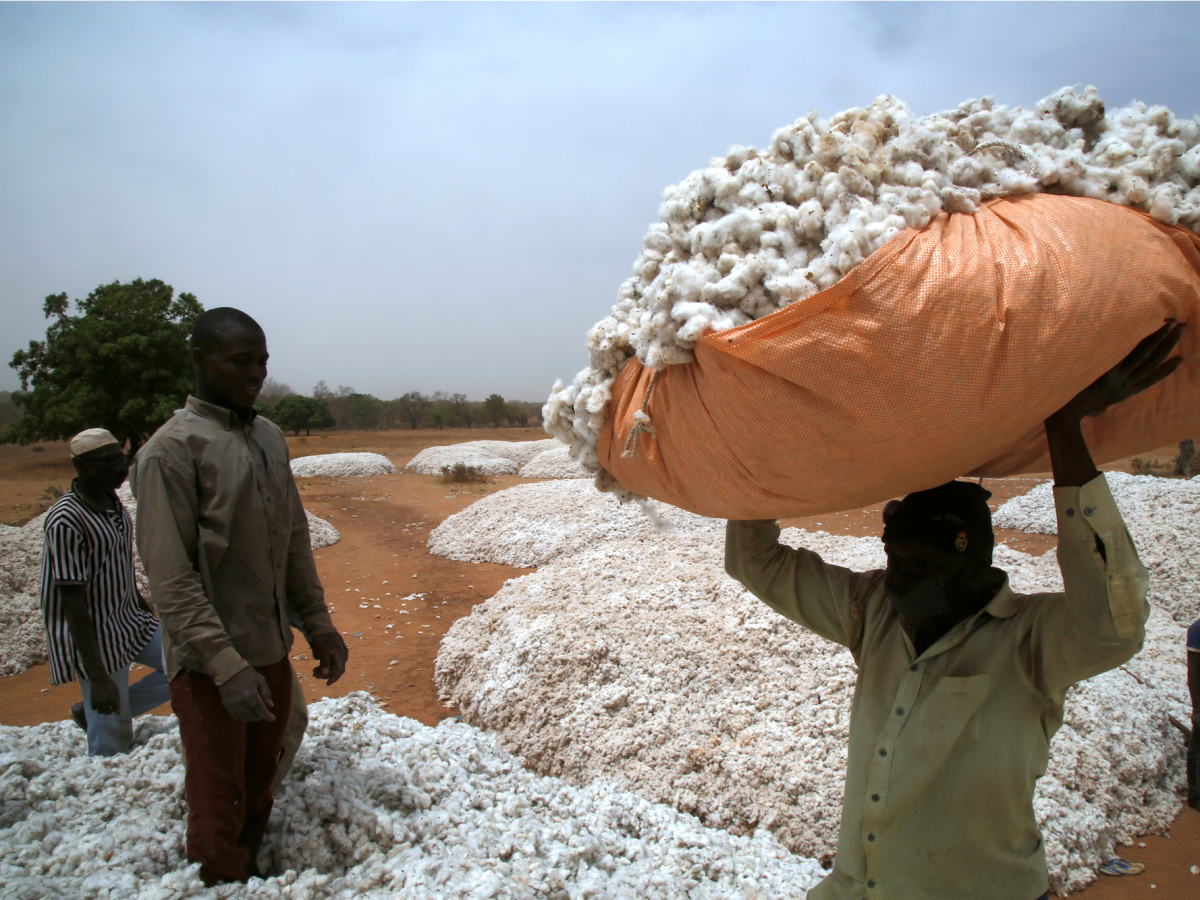â€哦ast Fashion in 2016: Industry Disruption and Geographic Dominance.
- Fast fashion makes shopping for wearing apparel more affordable, just it comes at an environmental cost.
- The fashion industry produces 10% of all humanity'southward carbon emissions and is the second-largest consumer of the earth'south water supply.
Some parts of modern life are, at this betoken, widely known to cause ecology impairment – flying overseas, using disposable plastic items, and even driving to and from work, for example. But when it comes to our dress, the impacts are less obvious.
Every bit consumers worldwide purchase more wearing apparel, the growing market for inexpensive items and new styles is taking a price on the surround. On boilerplate, people bought sixty% more garments in 2014 than they did in 2000. Fashion production makes up 10% of humanity's carbon emissions, dries upwards water sources, and pollutes rivers and streams.
What'south more, 85% of all textiles go to the dump each year. And washing some types of clothes sends thousands of bits of plastic into the ocean.
Here are the most significant impacts fast style has on the planet.
Clothing product has roughly doubled since 2000.
While people bought 60% more garments in 2014 than in 2000, they only kept the clothes for half as long.
In Europe, fashion companies went from an average offer of two collections per year in 2000 to five in 2011.
Some brands offer even more. Zara puts out 24 collections per twelvemonth, while H&1000 offers between 12 and sixteen.
A lot of this clothing ends up in the dump. The equivalent of one garbage truck full of clothes is burned or dumped in a landfill every second.

Landfill sights all across the world are filled with dress.
Paradigm: REUTERS/Mohamed Azakir
In total, up to 85% of textiles go into landfills each year. That'southward enough to fill up the Sydney harbor annually.

The Sydney Harbour could be filled twice annually with the textiles sent to landfill waste matter.
Image: REUTERS/David Grayness
Washing wearing apparel, meanwhile, releases 500,000 tons of microfibers into the ocean each year — the equivalent of 50 billion plastic bottles.
Many of those fibers are polyester, a plastic found in an estimated sixty% of garments. Producing polyester releases 2 to three times more carbon emissions than cotton, and polyester does not suspension down in the body of water.
A 2017 report from the International Marriage for Conservation of Nature (IUCN) estimated that 35% of all microplastics — very modest pieces of plastic that never biodegrade — in the ocean came from the laundering of constructed textiles like polyester.

35% of all microplastics come from the laundering of synthetic textiles like polyester.
Prototype: Cheryl Ravelo/Reuters
Overall, microplastics are estimated to etch up to 31% of plastic pollution in the ocean.

Microplastic pollution accounts for near a third of all body of water plastics.
Image: Reuters
The way industry is responsible for ten% of humanity's carbon emissions.

The way industry is responsible for 1/ten of carbon emissions.
Prototype: Stringer / Reuters
That's more than emissions than all international flights and maritime shipping combined.
If the mode sector continues on its electric current trajectory, that share of the carbon budget could jump to 26% by 2050, co-ordinate to a 2017 written report from the Ellen MacArthur Foundation.
The mode industry is too the 2d-largest consumer of h2o worldwide.

The manner industry uses vast quantities of water.
Image: REUTERS/P. Ravikumar/File Photo
It takes nearly 700 gallons of water to produce 1 cotton shirt. That's enough water for i person to drink at to the lowest degree eight cups per mean solar day for three-and-a-half years.
It takes nigh 2,000 gallons of water to produce a pair of jeans. That'south more than than enough for ane person to drink eight cups per day for 10 years.
That's because both the jeans and the shirt are made from a highly water-intensive plant: cotton.

Cotton is highly h2o intensive.
Image: REUTERS/Luc Gnago
In Uzbekistan, for example, cotton farming used upward so much water from the Aral Sea that it stale upwards after nearly 50 years. One time one of the world's 4 largest lakes, the Aral Sea is at present trivial more than desert and a few small ponds.

Cotton wool farming used up and then much water from the Aral Sea that information technology dried up after about 50 years
Image: NASA
Way causes water-pollution issues, too. Material dyeing is the world's second-largest polluter of water, since the water leftover from the dyeing process is oft dumped into ditches, streams, or rivers.

Dying textiles causes lots of water pollution.
Image: REUTERS/Jayanta Dey
The dyeing process uses plenty water to fill 2 million Olympic-sized swimming pools each twelvemonth.

The dying process.
Image: REUTERS/Rafiquar Rahman
All in all, the fashion industry is responsible for twenty% of all industrial water pollution worldwide.

A fifth of water pollution comes from the manner industry.
Image: REUTERS/Andrew Biraj (Bangladesh Surround Gild)
Some apparel companies are starting to cadet these trends by joining initiatives to cutting back on textile pollution and grow cotton more sustainably. In March, the United nations launched the Alliance for Sustainable Fashion, which will coordinate efforts beyond agencies to make the industry less harmful.
0 Response to "â€哦ast Fashion in 2016: Industry Disruption and Geographic Dominance."
Post a Comment